Brother Cadfael's Monkshood
Saturday, October 03, 2009
 This afternoon Rosemary, the girls and I went to the Vancouver East Cultural Centre to a wonderful performance of dance from Montreal, Diary/Journal Intime. I will write about it tomorrow as I have not had the time this evening to process the roll of Kodak Plus-X with which I took a few pictures of two of the dancers with Rebecca and Lauren. Time went quickly as I had to cook a roast beef for dinner and Rosemary made her “famous in our family” Yorkshire Pudding. We served the roast with potatoes, carrots and onions with lightly steamed snow peas on the side. Rebecca had several helpings of my meat gravy. Then I heard a scream in the kitchen when she cleared the table. It seems she spotted some blood on the cutting board which had oozed out from what was left of the roast. I explained to her that I had poured most of it into the gravy and that is why it was good. These Saturday night family dinners (and sometimes on Monday nights as well as Thanksgiving and Christmas Eve) are really a way for me to go back to the family dinners of my past especially the ones that were held at my Auntie Winnie's who was married to my father's oldest brother Harry. I remember Uncle Harry putting sugar into his mixture of Colman's Mustard for the salad he prepared. I remember Auntie Winnies severely deformed hands as she poured us her tea which we wolfed down with her lovely scones. To repeat that so beautiful statement from the Last Supper, "Do this in memory of me." We listened to some Gerry Mulligan and eventually all the girls, Rosemary, Lauren, Rebecca and Hilary ended up on our bed with Toby the cat while I scanned what you see here. Tonight may have been the last Saturday where I will be able to cut fresh roses from the garden to put on the dinner table. There were a few but the one that caught my eye was Rosa ‘Brother Cadfael’. I read all of the Brother Cadfael novels written by Ellis Peters. There is one that sticks out in my memory called Monkshood. The botanical name for this extremely poisonous perennial is aconitum. The variety that was growing not far from Brother Cadfael was Aconitum carmichaelii 'Arendsii'. Rosemary has a fondness for this plant’s very blue flowers and this very tall (7ft) variety flowers in the fall. Both Rebecca and Lauren know about the poisonous nature of this plant as well as Brother Cadfael. In the novel called Monkshood you do not have to guess what the murderer uses to do away with his victim.
Me Gustan Todas, Me Gustan Todas, Pero Esa Rubia...
Friday, October 02, 2009
Me gustan todas, me gustan todas,
me gustan todas en general,
pero esa rubia, pero esa rubia,
pero esa rubia me gusta más.
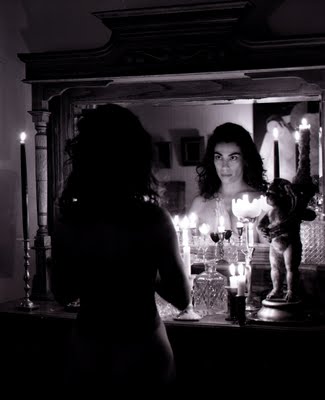 I like them all, I like them all
I like them all generally
but that blonde, but that blonde
I really like most of all.
Chiquillo, no digas eso,
que tu madre te va a pegar.
Mi madre a mí no me pega
Cuando digo la verdad.
Ta-ra-la-la, Ta-ra-la-la, Ta-ra-la-la....
Pero esa rubia, pero esa rubia,
pero esa rubia me gusta más.
I like them all, I like them all
I like them all generally
but that blonde, but that blonde
I really like most of all.
Chiquillo, no digas eso,
que tu madre te va a pegar.
Mi madre a mí no me pega
Cuando digo la verdad.
Ta-ra-la-la, Ta-ra-la-la, Ta-ra-la-la....
Pero esa rubia, pero esa rubia,
pero esa rubia me gusta más.
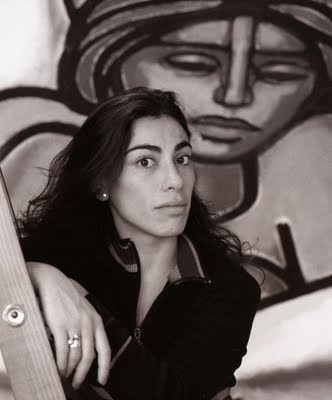 Little boy, don't say that,
or your mother is going to spank you.
My mother does not spank me
when I tell the truth.
Ta-ra-la-la, Ta-ra-la-la, Ta-ra-la-la....
But that blonde, but that blonde
I like most of all.
Little boy, don't say that,
or your mother is going to spank you.
My mother does not spank me
when I tell the truth.
Ta-ra-la-la, Ta-ra-la-la, Ta-ra-la-la....
But that blonde, but that blonde
I like most of all.
Since I could remember my grandmother would sing the above song on how men like all women but specially when they are blondes. I have no idea what would have made her sing it (the tune was a catchy one) in my presence. The only blondes in my family at the time were all relatives from my father's side.
In 1967 when this half-Latin gazed at the blond hair of my soon-to-be wife, noticed her lovely face, her wonderful blue eyes and her most shapely legs (as shapely as my mother's and she had the best legs in the world) I fell for her. Before I knew it I was married to Rosemary, a spectacular blonde. This is an action I have never regretted and I would do it again, over and over.
But every now and then I will see a dark-haired woman, particularly Latinas like the Chilean-born Carmen Aguirre in the pictures here and feel a longing from what seems to be in my innermost being. It is a nostalgia for my Latin roots. This longing is there even though Latins, and particularly Mexican men (I lived in Mexico for many years) will lose all their cognative ability when they see a blonde.
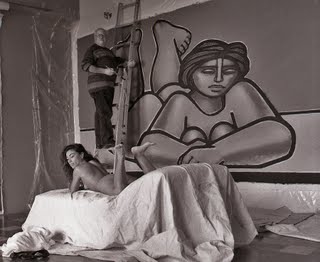
Juan Manuel Sanchez the man painting the mural on the big canvas hanging in my studio a few years, ago would have probably asserted, "Solo una morocha es una verdadera mujer." (Only a dark-haired woman is a real woman.)
Whichever way you want to look at this, I wish I could leave you with the tune that is now playing in my head in the voice of my grandmother's colaratura. She had a delightful smile on her face as she sang it "con sal" (with feeling and humour). Perhaps she was looking into my future.

I Visit Myself
Thursday, October 01, 2009
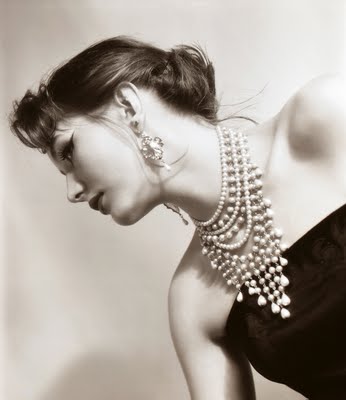
Today I visited myself.
My ex student Gabriel Beltrán, he graduated from Van Arts where I teach photography, came for a visit. He is returning to his home in Monterrey, Mexico next week. He must be close to 30 years old. After our homemade pizza lunch, washed down with a blender pineapple drink, we sat down in the living room to sip some strong Kenyan Kambaa tea. Gabriel rifled through my photography book collection putting a particular emphasis on the ones that contain nudes. I decided to put some music. The first CD I played was Stan Getz and Kenny Barron People Time (the last recording by Getz). I played my favourite track, First Song (For Ruth) by Charlie Haden. With a pen in hand an a sheet of paper Gabriel asked, “Who's that?” I replied, “Stan Getz.” “How do you spell that?” he inquired.
That second question transported me to Mexico City College in 1962. It was there that my friend Robert Hijar said to me, “Have you heard this?” Somehow he pointed at a radio that was playing, perhaps in the college cafeteria. I don’t remember, exactly. I then listened to some of the most startling, fresh and beautiful music I had ever heard in my life. It was Stan Getz and Charlie Byrd playing Desafinado from the just released album Jazz Samba.

It would seem that in a smaller way, Gabriel first heard Stan Getz today.
From Getz we went to Charlie Haden’s Quartet West – In Angel City to listen to Haden’s own version of that First Song (For Ruth). I went to my book case and took out a couple of Raymond Chandlers and told Gabriel, “This Charlie Haden album is really inspired by the works of this writer. Humphrey Bogart played his hero in a wonderful film noir.”
From Chandler we then listened to the Dave Brubeck Quartet, Jazz Impressions of Eurasia. Again that question as to who it was and how did you spell Brubeck. Then it was Oscar Peterson and Milt Jackson playing the Work Song, Dizzy Gillespie playing Con Alma, Daniel Barenboim’s Mi Buenos Aires Querido and we sort of finished with an early Astor Piazzolla Octet CD. Sort of finished because I could not find Aaron Copland’s Salón Mexico in my CD collection so I went to the computer and found it on YouTube. I had told Gabriel that the American Aaron Copland (1900-1990) is my favourite Mexican composer. I will stick to my opinion as Copland sounded more like the Mexican Silvestre Revueltas (1899-1940) before (or simply better) than that famous composer when he composed his own works.
Suddenly I was to answer the question as to who was my fovourite photographer. I mentioned Philippe Halsman. He had forgotten the name but not my book or the pictures in it as I had taken it to school and he had perused it during one of the class breaks. I then handed him Halsman at Work by Philippe Halsman and Yvonne Halsman. This book shows how Halsman took some of his most famous photograph all intimately explained by Halsman’s wife. Included here are the incredible ones of Dalí in the air with all those cats and buckets of water. Suddenly Gabriel had found a book that interested him more than all the ones about nudes. “It’s like being behind the photographer during the shooting session,”he said to me. All I could add to that was, “Unless you know that the book exists because you have it your hand now you would never in our present times now about it.”
It seems we ran out of time and I never was able to answer his question, “Can you recommend me some poets?” Right off the bat it would have been Cuban Nicolás Guillén and Mexican Homero Aridjis.
I had to go to town so I drove Gabriel. In the car’s CD player we listened to Duke Ellington playing Oclupaca (Acapulco backwards) and Tina (dedicated to Argentina).
It would seem that the much younger Gabriel is experiencing for the first time (alas that is something that few my age can do) the delights of Getz, Chandler, Ellington and Brubeck. It was me all over again.
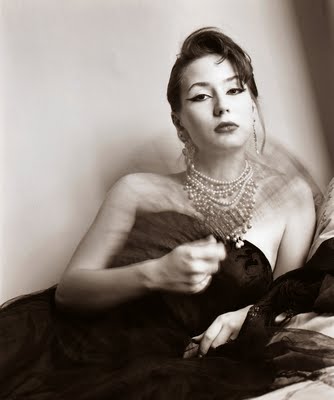
But it wasn’t all one sided. As he leafed through the Halsman book I noticed how many of Halsman’s pictures had not been taken in a studio. I looked around my living room. It is a nice one with books, pictures on the wall and that psychiatric couch. I don’t have a studio anymore. Could this be a new and exciting beginning (continuation)? Could it be that I will experience something for the first time(again)?
I would have never given the pictures I took of Daniella Ciccone some 18 years ago a second look. Today I did. Not bad for pictures taken in her house!
Wednesday, September 30, 2009
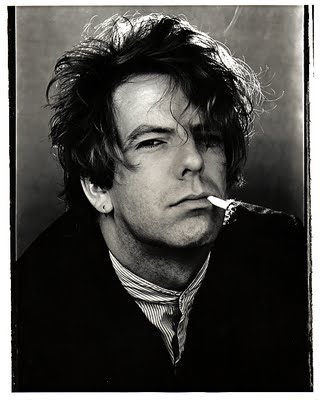 In all my 35 years in Vancouver I have only heard one song that to me represents not only Vancouver but much of the rest of BC. I have been thinking about this because CBC Radio 2 is pushing its Great Canadian Song Quest. It is a contest where the general audience can suggest places in our provinces and then the best Canadian talent will be hired to compose songs for them, 13 original songs in all for all of Canada. The song that to me is quintessential Vancouver and in just about every area of our province where it rains is Art Bergmann's Hawaii. Today it poured and some streets in the city flooded. It is obvious that summer is over, fall is here and the corresponding rains have arrived. I could not get Bergmann's tune out of my head as I walked in the rain. I had forgotten to pack an umbrella. Hawaii Bergmann 1980, SOCAN 1979 Quintessence Records Let’s go to fuckin’ Hawaii
Get drunk in the sun
I wanna lay on Waikiki
Get a tan on my buns
Runnin’ from the rain
Thousands on the run
Makin’ like the rich
Heading for the fun
Let’s go to fuckin’ Tahiti
Lounge on the beach
Those native girls are so pretty
Swayin’ to the native beats
Runnin’ from the rain
Thousands on the run
Makin’ like the rich
Heading for the fun
2 AM
Economy Air
747
Drunk to the roof
Worked all summer
Saved my money
So I can warm
Let’s go to fuckin’ Miami
Loungin’ on the beach
I got my neighbour kid, a real cutie
Cheaper than a Georgia peach
Runnin’ from the rain
Thousands on the run
Thinkin’ like the rich
Heading for the fun
Let’s go to fuckin’ Las Vegas
Blow a wad in the Sun
I wanna stop for a party
Before I’m back under the gun
Runnin’ from the rain
Thousands on the run
Makin like the rich
Heading for the fun
2 AM
Economy Air
747
Drunk to the roof
Worked all summer
Saved my money
So I can be warm
Let’s go to fuckin’ Hawaii
Let’s go to fuckin’ Hawaii
Runnin’ from the rain
Thousands on the run
Makin’ like the rich
Heading for the funThe tune is fast, furious and catchy. The lyrics represent a lifestyle that has not changed much in the years that I have been here. Those that can, go somewhere in the dark rainy month of January. Those that might not be able to, work hard during the year to save enough money to escape our dreary weather. I have my doubts that anybody will ever top Hawaii for representing the wet soul of Vancouverites and Lowermainlanders. Why compose a new song for Vancouver when we have the best ever right now? Hawaii
Robson Street Studio Nevermore
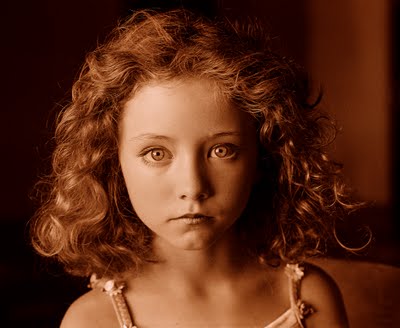 Today is September 30 and it is a special day of reflection and rationalization for this photographer. The last thing I did when I closed the door of my empty and freshly vacuumed studio at 712 Robson, Suite 18 was to peel off the little sign on the door that Darryl Snaychuck made. He was a young up-and-coming Vancouver photographer with whom I shared the studio for the first years some 17 years ago. He did a lot of work painting walls gray and white and making large reflectors out of foam core. 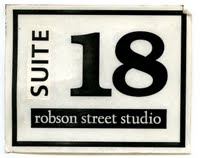 I think that just about every profession must have the concept of having a place to hang one’s shingle that one can call one’s own. This was the case with my Robson Street studio but which in the last couple of years became a case of more money leaving to pay its rent than the money coming in. Today I brought the last of the large paper backdrop rolls. They stuck out of the passenger window of Rosemary’s car. Except for a white one I never used the rest of them which were red, blue and several shades of gray. My backdrop of choice was Darryl’s middle gray wall. I could make that wall black, many shades of gray and almost white depending on how I lit it. I seriously doubt I will ever use the seamless (as we photographers call these rolls) except the gray one which I just might cut in half (its width) and roll it out in my living room to photograph my granddaughters. The folks at Focal Point have told me that since I teach there I can use their studios (they have three) any time, free of charge, if I give them some notice. This is a good thing and I must admit that my studio location had been getting seedier in the last few years. A pipe shot one floor beneath me wafted pot smoke into my studio in the afternoon. The same pipe shop pumped heavy drum music during most of the day. An Iranian/Lebanese style fast food restaurant on the street level made my studio smell like a kitchen where a horse had died weeks before. The high end tax lawyers from Thorsteinsson’s who thought my studio was funky have moved on to having their pictures taken in their office, perhaps by their office manager. I reflect on the people who have come to my studio to have their picture taken and I try to decide which were the most memorable. I thought this might be a difficult activity but it has not been. My studio had the best natural lighting in Vancouver as the Sears building (formerly Eaton’s) reflected a whole white city block into my studio which had four very tall and large windows. The light in the afternoon, especially on a summer day was so bright that it sometimes induced migraines. I had to put heavy black curtains to block the light so I could ignore God’s light and use my own controlled lighting. But there was mid-morning day in 2005 when I was getting ready to take some lit studio pictures of my granddaughter. She was being made up by my daughter Ale. It was then that I noticed the window light coming in and making Rebecca’s face seem like it was the Medusa’s. I put my camera on a tripod and took that rare picture (for me using my large camera without flash is a rare occurrence). In the end the image became the signature image of a show I had that year at a 4th Avenue gallery and I sold a very large giclée version of it to art collector Yoseph Wosk for very good money. His comment to me when he became interested in the picture was, "She looks transformed, almost mystical." I almost replied, "It was God's light." 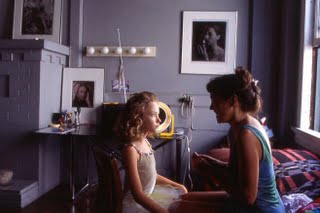 Not having my own studio now I will perhaps explore God’s light again and see what I can do to attempt to match the picture of Rebecca here.
Junkets, Mary Wilson, Chivas Regal & No Brooke Shields
Tuesday, September 29, 2009
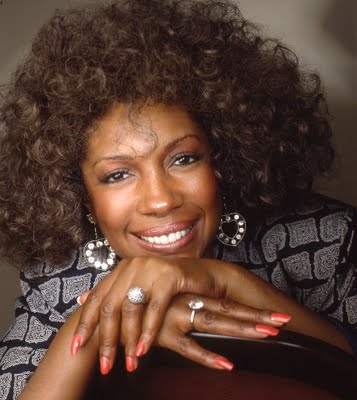 jun·ket Pronunciation: \ˈjəŋ-kət\ Function: noun Etymology: Middle English ioncate, ultimately from Vulgar Latin *juncata, from Latin juncus rush Date: 15th century 1 : a dessert of sweetened flavored milk set with rennet 2 a : a festive social affair b : trip, journey: as (1) : a trip made by an official at public expense (2) : a promotional trip made at another's expense, a film's press junket. It has been a while since I have been in a junket. In the 80s there were wonderful junkets. I went on one to Yugoslavia (Champagne before the airplane took off, Champagne when the airplane was landing) and a most enterataining one to literary England in the Shropshire area sponsored by British Airways. It was the only instance in my life that I slept on a bed on an airplane. There was a yearly junket to Whistler that took Vancouver Magazine writer Les Wiseman and his photographic sidekick that has its moments even though we never did get what we wanted. Every year the folks of the celebrity skiathon in Whistler promised us the participation of Brooke Shields. She never ever showed up. In 1988 I took portraits of several luminaries of the time including one of the original Supremes, Mary Wilson. I am amazed when I perused her file that I took pictures in b+w negative, colour negative and colour transparency. Not only that I took several lights including two optical spotlights. In one of them I inserted a metal gobo stamped with stars. You can discern part of the stars in the pictures here. 1988 in Whistler was memorable for another reason. I have never been a drinker. In fact I almost never drink. When we got to Whistler, Wiseman said, "As your attorney I suggest we imbibe some Scotch." So we went to the bar of the Château Whistler and we were greeted by a most pleasant blonde waitress who confessed to us that she was new at the job and that she had recently come from Newfoundland. We ordered our Scotch and sodas and as she went away I called her back, “Do you happen to have Chivas Regal?” “What’s that”? She asked me.” It’s just a Scotch. Can you put that in our drinks and bring us the bill?” Les looked at me puzzled. Our drinks arrived and I checked the bill. The bill was for a much cheaper bar scotch. When I tell my friends this story and how we had Chivas Regal Scotch and sodas for a whole weekend they invariably tell me, “Why would you waste such a good Scotch with soda?” My answer is always the same one, “Because a Chevas Regal Scotch and soda for this non- drinker is almost palatable.” While Brooke Shields never did turn up I am sure that Wiseman felt amply compensated. 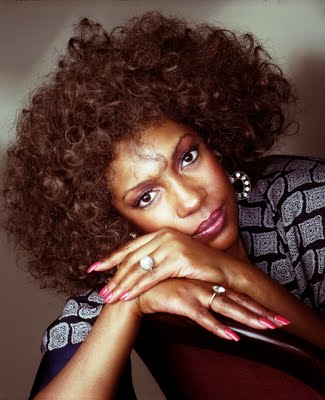 The first portrait of Wilson was taken with an enhanced warm colour transparency called Ektachrome EPN. The second one was taken with Kodak colour negative VPS. I really have no idea which is the one that is the "correct" colour. In the case of the colur negative there has been some deterioration which causes what is called a magenta/green shift. I never did listen to Mary Wilson sing live. The closest I ever got to her was one block away from the Cave around 1980 when the Supremes had come to town. I was at Gary Taylor's Rock Room and the all-gril punk band, The Dishrags sang their off-key version of You Can't Hurry Love and dedicated it to the "girls down the block tonight." 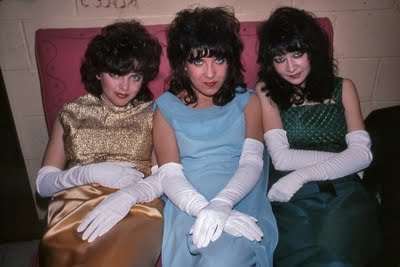
Rembrandt & The Art Dealer
Monday, September 28, 2009
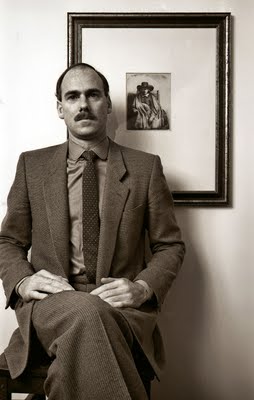 It was around 1978 that I photographed art dealer and gallery owner Franz Wynans. I think that I ran into him many times after that and only for my photograph did he ever not smile. He was a cheerful kind of man. His buddy was painter Bill Featherston. They went everywhere together in Wynans's nicely restored Citroën(the one that looked like a shoe and had pneumatic suspension). To me they looked like a couple of scoundrels who were having fun. In fact one of them was and appeared on the front cover of the Sun as such. It was sometime in 1984 that Wynans with some investors convinced Wayne Gretzky to pose for Andy Warhol for an edition of 300 prints. 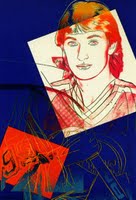 I haven't seen Wynans or his Citroën for a while. He must be missing his pal Featherston who died early this year. I wonder who eventually bought that Rembrandt etching that Wynans posed with. He told me it was called "The Art Dealer".
The Palest Ink & The Limitless Real Estate Of the Web
Sunday, September 27, 2009
The palest ink is better than the most retentive memory.
Chinese proverb.
That wich the men of old and of modern times conceived in their learned souls is free for the inspection of those who would read.
Ovid, from his Tristia
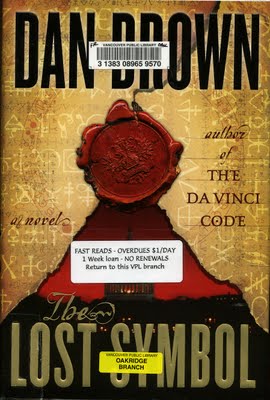
Eight years ago I did some work for the UBC Trek Magazine and dealt with the most pleasant editor of the time. His name was Chris Petty. They paid photographers well and they paid writers one dollar per word. That was rare then and now it strikes me as literary science fiction. I told him that I had had some pleasant experience using the UBC Library and that I was prepared to write something on the subject for that lofty one dollar per page. I wrote an essay on libraries and their origin and from there went to write about the UBC libraries. Petty was vaguely dismissive and wrote me something like, “This was not what I was expecting.” I left it at that and filed it away. It seems that the article I did write was one in which I used an old Smith Corona word processor, PWP-40 that used a smallish proprietary type of floppy disc that was not compatible with PCs. Only a week ago I threw away the PWP-40.
I have been thinking about libraries again (I will explain below) so I went to my photo files and found Libraries. To my mild horror the manuscript of the piece I wrote for Trek is missing some pages. And the disc that I have of the article cannot be opened now. So I will use what I found to write today’s blog about libraries and my newly re-discovered interest in them.
If this blog is too long ( I read recenty in the NY Times the statement: Space in print is limited, in the web the reale state is limitless.) you could read the first part (why it is libraries are on my mind) and skip the second part which is a brief history of lending libraries with an emphasis on the UBC Library.
At age 67 the full bookcases and the stacks of books I have on my living room floor produce a deep anxiety. Do I need all my books? Will I ever re-read any of them (this I do with frequency)? Where can I find a home for them that will ameliorate the pain of giving them away? I have been very careful when I buy the books that I do buy. Besides their expense (I find bargains in the remainder section of Chapters) I feel guilty about adding to the piles at home.
In the last recent months I have been going to the VPL with frequency searching for the right spoken books to copy so that I can send them to Inesita my godmother and first cousin (she is 86) in Argentina who has poor sight but wants to continue reading in English. She is choosey about what she reads. She has the same highbrowish taste my mother had. There are quite a few people that say that copying a spoken book to send to BA for personal use is no different from lending a library book to a friend (with the stipulation it be returned promptly!) This week I hit pay dirt at both my nearby Kerrisdale Branch and the Oakridge Branch.
I found:
A Certain Justice, P.D. James
Lives of Girls and Women, Alice Munro
Passion and Artemisia, Susan Vreeland
The Piano Man’s Daughter, Timothy Findley
The Glace Bay Miner’s Museum, Sheldon Currie
The No. 1 Ladies’Detective Agency, Alexander McCall Smith
AND! The Year of Magical Thinking, Joan Didion
My cousin Inesita listens to the books I send her twice per month and gets much pleasure. I feel very good about doing it. It is perhaps because of this that I have come to understand the value of the library and how we take libraries so much for granted. This awareness hit me almost like a blow in the face when I saw at the Oakridge Branch in their Fast Reads section Dan Brown’s The Lost Symbol. I would not be caught dead spending money to buy this sort of thing. I did read the Da Vinci Code when it first came out and Rosemary, Rebecca and I saw the film in our hotel in Mérida two years ago (to the disapproval of Rebecca’s mother Hilary, my daughter!). So I took out the book and I am enjoying it without too much guilt.

The other book I found helps to remove all that guilt of no longer wishing to buying a book I want to read now. My neighbour Patricia Hutter has borrowed all of my Dona Leon novels featuring a suave and erudite Venetian police inspector called Brunetti. Then she lent me one written by Andrea Camilleri. I was hooked so she lent me the other two she had which are all about Flavio Montalbano a Sicilian police inspector with Epicurean sensibilities. I have done my best to not consider going to Chapters to buy the rest. There, at the Kerridale branch I spotted those telltale pastel colours of the series! I happily brought it home.
I am ready now to buy fewer books and to take advantage of the excellent library system our city has for us.
Libraries
In January 1998 I hopped on a bus to the University of British Columbia and became a member of the UBC Library. At the Walter C. Koerner I borrowed the complete works of Cuban writer Alejo Carpentier in Spanish and bought a hot dog outside. I managed to get home on the transfer, not before buying for $3.00, from a bargain bin of the UBC Bookstore , a pristine first edition of Andrew Miller’s remarkable novel Ingenious Pain.
I had been at the Koerner two years before. Arthur Erickson, the library’s architect, had posed for my camera on the top floor. He had shown up in a beautiful gray suit that matched the concrete and metal he so intimately knew. Behind him we could se the old Main Library. Erickson had built the Koerner with that view, and another, in mind. Behind me was Howe Sound.

UBC was incorporated in 1908 but the library did not open until 1915 in two rooms of the new tuberculosis wing of the Vancouver General Hospital. The first university library, the Sorbonne, opened in 1250, when the king’s chaplain, Robert de Sorbonne established a residence for theology students of slim resources.
The first university library I ever used was at the University of Texas at Austin during the early 60s. It was then fashionable to sneak a few six-packs of Pearl Beer and a date to the observation deck of the library tower. Nobody had yet thought about bringing up guns.
In spite of having the best codex and manuscript, second only to Seville’s, on the European discovery and conquest of he New World, the library also served another less-learned purpose. During football season it would be brilliantly lit at night to signal a Texas Longhorns victory. This is the case today. While I may have had to sneak in at Austin to the library observation deck, at UBC they had other restrictions. It was only in 196 that first and second year students were finally allowed access to the stacks before 6pm.
My lifelong attraction to libraries began with a bomb. In 1948 the US Information Service Lincoln Library on Calle Florida in Buenos Aires was bombed. On its blackened walls protesters painted, “Imperialistas Yankees Fuera (out) de la Argentina”. When the explosive went off outside I was inside checking out Curious George. I was 7. In spite of the scare, I returned to the library many times and in 1952, when my family moved to Mexico I became a member of the Benjamin Franklin, the Lincoln’s equivalent in Mexico City. It was popular with the engineering students as the library was the only on that hand American technical journals and periodicals. While there were well-founded rumours that these libraries were CIA fronts, I was never approached by any spooks. But a spook may have been involved in the early history of the UBC Library. In 1914 when J.T. Gerould was appointed to buy a basic collection for the library for the newly incorporated UBC he purchased 20,000 books in England and in France. In Leipzig he was locked up for three years, accused of being a British Spy.
The USIS libraries as opposed to most others in Latin America are unique in that you can take books home. The concept of a circulating library is a relatively recent phenomenon. Canadians take for granted a steady 110 voltage, and unwavering 60 cycles. They take for granted being able to bring home a library book. Not only is this normal but it would also seem a God-given right. My Argentine relatives refuse to believe that my Felix the Cat wall clock tells correct time in spite of being plugged in to an outlet. I wouldn’t ever try to explain that here I can not only take out books and spoken books but also films on DVDs from the public library.
The first tax-supported public library opened in Peterborough, New Hampshire in 1833. Before that there were subscription libraries where members, who not only paid dues but had to buy shares, could take books home. On such library, the Library Company of Philadelphia, founded by Benjamin Franklin in 1732 made the librarian responsible for any lost books. Andrew Carnegie, who gave away more than $65 million for public libraries in the United States alone and not counting the money given to his native Scotland, the British Empire and Vancouver, popularized the concept of stipulating that the money given hinged on the municipality of the city setting aside funds for their upkeep. In 1932 during the Great Depression a Carnegie grant of $15,000 tidied over the UBC Library so that by 1936 it had 100, 000 volumes.
Paradoxically while Juan Perón’s henchmen burned books from Buenos Aires Catholic churches in the early 50s it was also Perón who inculcated in young school children the idea that books were valuable and should be taken care of. We were instructed to never write anything in them besides our name. It is interesting that when Erasmus borrowed two manuscripts in 1443 from the Dominicans at Basle he returned them covered with red pencil marks.
Books have always been valuable and only the cheap pocket editions that US soldiers read during WWII ushered the era of affordable books. When professor Michaelis of Gottingen asked for the use of a Hebrew bible condex form Casse in 1767, the Landgrave, Duke Charles Eugen of Wurttemberg granted him permission but had the manuscript brought to Gottinhen under the protection of hussars.
USIS Library “indoctrination” led me to an early appreciation in reading books in English and in particular those by American authors. It all changed in 1989 when I got to the third chapter of Stephen King’s The Tommyknockers and was turned off by the concept of a mass frenzy to buy Tampax at the novel’s small-town drugstore by its female inhabitants. I decided then and there that I would seek out other literature.
Newspaper articles on Peruvian author Mario Vargas Llosa’s run as a candidate for his country’s presidency awakened an interest in his books. This led to other Latin American and Spanish authors, Gabriel García Marquez, Álvaro Mutis, Jorge Luís Borges, Jorge Amado, Homero Aridjis, Carlos Fuentes, Nicolás Guillén and many more. Some of the books were available in Spanish at the now closed Manhattan Book Store and its present day version, Sophia Books. But hardcover and even paperback books imported from Spain or Mexico command a stiff price so I had come to depend on the Vancouver Public Library’s good but small collection of contemporary Latin American literature in Spanish.
It was sometime around 1998 when my search for Jorge Amado’s Dona Flor and Her Two Husbands (in any language) got me nowhere until I tried the UBC Library’s web page. While I have never considered the VPL’s on line stack’s search is that user friendly (it has vastly improved) I was amazed at how good UBC’s was. In short order I located an edition in English and one in Portuguese which were at the Main Library. I keyed in the out-of-print Concierto Barroco by Alejo Carpentier and was rewarded with the information that the library had Carpentier’s entire literary output. When I explored the stacks of Latin American Lit at the Koerner I could sense the hand of UBC professor George McWhirter (the recent Vancouver Poet Laureate) who has translated from Spanish into English the poetry of my favourite Mexican novelist, Homero Aridjis. Most of his works were there and in Spanish.
The UBC Library is made up of 10 libraries on campus and 4 off campus. I recently noted that while the Education Library does not have children’s books in Spanish (unlike the VPL) it does have a nice variety that made my granddaughter Rebecca happy.
On any given day you can be assured that if you trek to the UBC Library that it will be open on schedule unlike the main branch of the VPL which may close on certain Sundays or when movies are being made on location. Ammianus Marchellinus, a Latin historian in 78 A.D. wrote:
Byblothecis sepulchrus ritu in perpetumm clausis.
He would have approved of UBC's library as it certainly is not closed forever like a tomb.
|


























